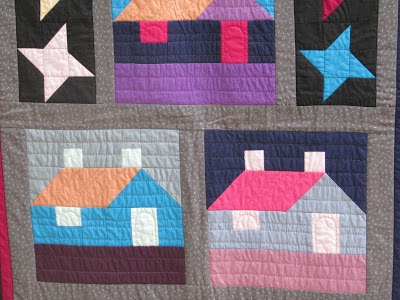Swan
Bay Quilters Friendship
Quilt: 1988
Just for the Record:
Quilt Finished Size: 68 x 69cm
Block Size: 12” & 6”
Cut in: 1988
Pieced & Basted: Hand 1988
Quilted: Hand 1988
Quilt Type: Friendship
Quilt Finished: 1988
Exhibited:
Collection: Home# 016
Pattern Name: Signature Blocks around original design Applique Medallion
Pattern Source: Sue Longmore
Fabrics Purchased: Group scraps
Fabric Design: Plains & subtle pastel prints
Fabric Style: Cotton
Materials Type: Cotton
Wadding Type: Thin Poly Batt
Backing: Cotton
This wonderful signature quilt was given to me on my
departure from Queenscliff and the Swan Bay Quilters. It has a central applique medallion, a black
swan typical of the area and is surrounded by smaller autographed blocks. The idea was to use fabrics from their current
project or stash. I still love it as it
brings back many fond memories of my time in Queenscliff and the friends I made.
Just for the Record:
Quilt Finished Size: 68 x 69cm
Block Size: 12” & 6”
Cut in: 1988
Pieced & Basted: Hand 1988
Quilted: Hand 1988
Quilt Type: Friendship
Quilt Finished: 1988
Exhibited:
Collection: Home# 016
Pattern Name: Signature Blocks around original design Applique Medallion
Pattern Source: Sue Longmore
Fabrics Purchased: Group scraps
Fabric Design: Plains & subtle pastel prints
Fabric Style: Cotton
Materials Type: Cotton
Wadding Type: Thin Poly Batt
Backing: Cotton

























